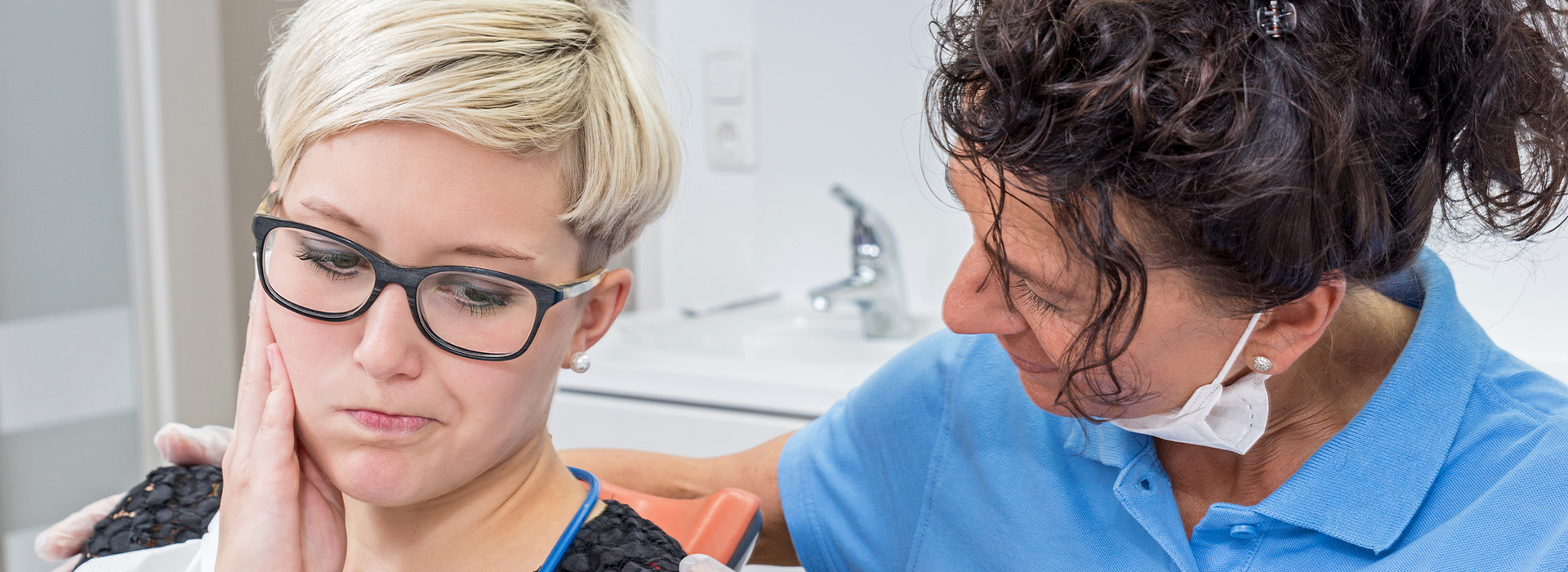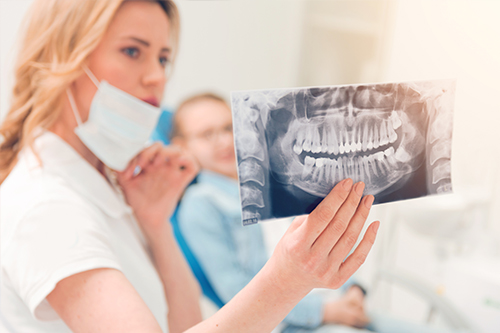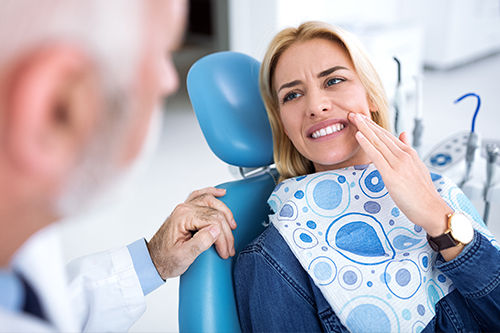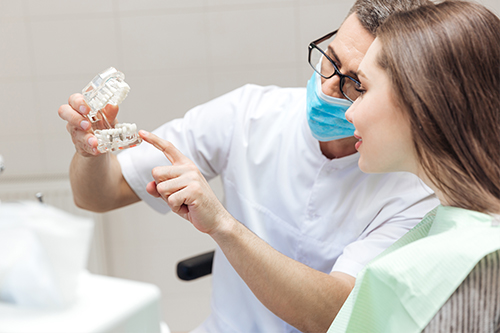How to Respond When a Dental Emergency Happens
Dental emergencies can be sudden and alarming. The first moments after an injury or the onset of severe pain are important for preserving teeth and protecting oral health. Stay calm, assess the situation, and seek professional care quickly — prompt attention can make the difference between saving a tooth and needing more invasive treatment later on. Patients who act deliberately are often able to reduce pain, limit infection risk, and improve outcomes.
Immediate steps depend on the problem. For a knocked-out tooth, handle it by the crown (avoid touching the root), rinse gently without scrubbing, and place it back in the socket if possible. If that’s not feasible, keep the tooth moist in milk or saliva and get to a dental office right away. For severe bleeding, apply firm pressure with clean gauze and sit upright to reduce blood flow to the mouth. These measures are temporary — they help stabilize the situation until a dentist can evaluate you.
Not all oral emergencies require the same urgency. Persistent, intense pain, swelling that affects breathing or swallowing, uncontrolled bleeding, or signs of spreading infection should be treated as urgent and evaluated by a clinician as soon as possible. Milder problems, such as a small chipped tooth without pain, still benefit from timely attention to avoid longer-term issues like decay or structural weakness.
The practice at Towne Dental & Orthodontics emphasizes quick assessment and practical first-aid advice for patients who are frightened or uncomfortable. Our team prioritizes comfort and safety while creating a clear plan for diagnosis and treatment so patients know what to expect from the moment they arrive.
Types of Dental Emergencies We Handle
Dental emergencies come in many forms. Common urgent problems include severe toothaches, fractured or chipped teeth, lost or damaged restorations (like fillings and crowns), and displaced or avulsed (knocked-out) teeth. Soft-tissue injuries such as deep cuts to the tongue, lips, or cheeks, and sudden swelling from infection also require prompt evaluation. Identifying the nature of the problem helps guide immediate care and follow-up treatment.
Oral infections present their own challenges. An abscessed tooth can cause localized swelling, fever, and persistent pain, and infections sometimes extend to surrounding tissues if not treated. Likewise, uncontrolled bleeding around a surgical site or following trauma is a serious concern. The practice treats a wide range of conditions affecting both hard and soft tissues and coordinates with specialists when necessary to manage complex cases.
Wisdom tooth complications can become urgent when impaction or infection leads to significant pain, swelling, or difficulty opening the mouth. Broken or ill-fitting dentures may cause sores or impair eating and should be evaluated to prevent secondary problems. Our goal is to stabilize symptoms, assess underlying causes, and develop a safe, effective plan to restore oral health.
Because every emergency is unique, clinicians will consider medical history, current medications, and overall health when making treatment recommendations. This holistic approach ensures that urgent care is not only effective but also appropriate for each patient’s needs.
What to Expect During an Emergency Visit
When you arrive for emergency care, the team will focus on quick, calm triage to determine the severity of your condition. The first step is a targeted history and examination: what caused the problem, how long symptoms have been present, and whether there are signs of infection or systemic involvement. A brief set of X-rays or other diagnostic imaging may be taken to clarify the extent of damage and guide treatment decisions.
Treatment during an emergency visit often has two objectives: relieve pain and stabilize the condition. Pain control may include local anesthesia, short-term medications, or other measures to make you comfortable. Stabilization can mean repositioning a tooth, sealing an exposed area, placing a temporary restoration, or draining an abscess when appropriate. In some cases, immediate definitive treatment is possible; in others, temporary measures are used to buy time until a more comprehensive procedure can be scheduled.
Communication is a core part of the emergency visit. Your clinician will explain the diagnosis, outline reasonable next steps, and discuss what to watch for during recovery. Wherever possible, the practice strives to preserve natural teeth and restore function with conservative techniques, but clinicians will also describe restorative options if a tooth cannot be saved.
Follow-up care is commonly necessary after the initial emergency visit. This may include scheduling a restorative appointment, arranging for root canal therapy, or coordinating with an oral surgeon for extraction or advanced care. The emergency appointment is about providing immediate relief and charting the course for lasting recovery.
At-Home First Aid: Practical Steps Before You Arrive
Before you can reach dental care, there are practical first-aid steps that can reduce pain and limit further damage. For swelling, apply a cold compress to the outside of the face in 10–15 minute intervals; this helps control inflammation and discomfort. Over-the-counter pain relievers can be used as directed to manage pain until you are seen; avoid placing aspirin directly on exposed gum tissue, as it can cause irritation.
If a filling or crown comes loose, save the restoration and bring it with you — sometimes it can be reattached or used as a temporary cover. For a fractured tooth, rinse with warm water and use a clean cloth to control bleeding. Avoid chewing on the affected side and keep sharp edges covered with dental wax or sugarless gum to reduce soft-tissue injuries. These measures are intended to protect oral tissues until a dentist provides definitive care.
For dental infections, do not ignore swelling, fever, or difficulty breathing. Such symptoms can indicate that infection is spreading and require urgent evaluation. Likewise, a knocked-out tooth should be handled carefully and brought to the dental office within the shortest possible timeframe; the likelihood of successful reimplantation decreases with time but is improved by rapid, proper handling.
Keeping an emergency kit in your home — sterile gauze, a small container for a preserved tooth, dental wax, and contact information for your dental office — can make a stressful situation easier to manage. While the kit does not replace professional care, it can help you protect oral health while you prepare to be seen.
Repairing Damage and Planning Long-Term Care
After immediate symptoms are controlled, the next step is restoring function and preventing recurrence. Treatment options vary depending on the diagnosis. Minor chips may be repaired with bonding; larger fractures often require crowns to rebuild strength and appearance. When decay or trauma reaches the tooth’s inner tissues, root canal therapy is a common approach to preserve the natural tooth and avoid extraction when possible.
When a tooth cannot be saved, extraction may be the safest course. Modern restorative dentistry offers multiple reliable ways to replace missing teeth, including implant-supported restorations, bridges, and removable prosthetics. Each option has advantages depending on the patient’s oral health, bone support, and personal preferences. The practice will present choices and explain the rationale so patients can make informed decisions about their long-term care.
Preventing future emergencies is an important part of treatment planning. This can include restoring weakened teeth, correcting bite problems that place excess stress on teeth, and addressing periodontal issues that may compromise tooth stability. Regular dental care and timely attention to small problems often reduce the likelihood of urgent situations.
Coordination of care is sometimes necessary for complex or multispecialty needs. If an emergency requires surgical intervention, orthodontic consultation, or specialized restorative work, your dental team will arrange referrals and provide transitional care to ensure continuity throughout treatment.
In summary, dental emergencies demand prompt, informed action to minimize pain and preserve oral health. Towne Dental & Orthodontics provides focused emergency evaluation, practical first-aid guidance, and clear pathways to restorative care. If you are experiencing an urgent dental problem or have questions about what steps to take, please contact us for more information.






